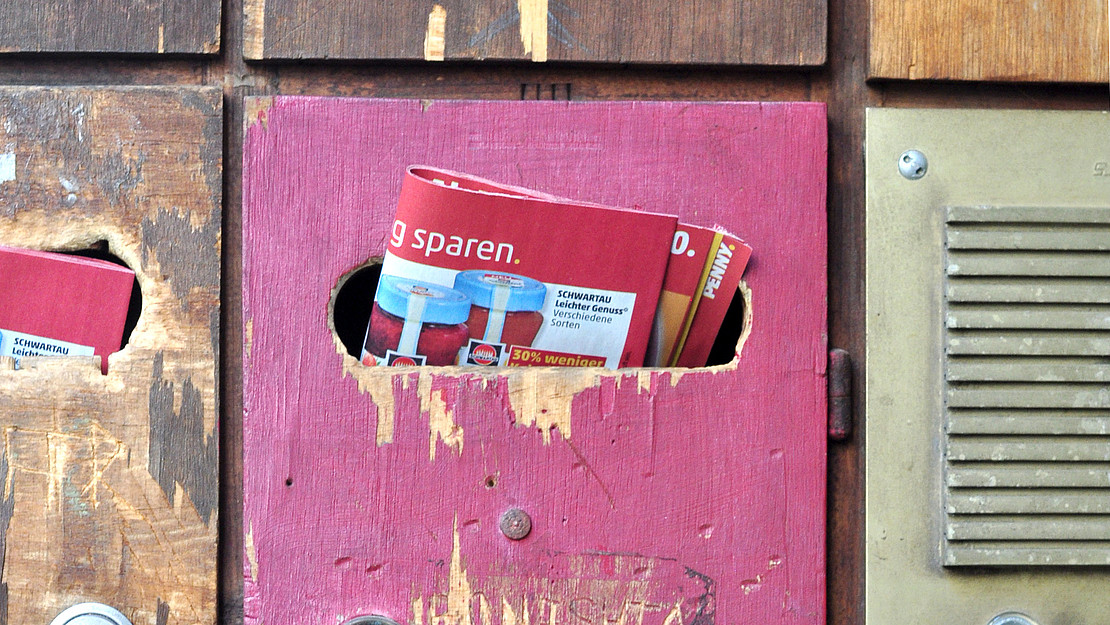This page contains automatically translated content.
Kasseler Studie: Werbebriefe auch im digitalen Zeitalter wirksam
 Image: Markus Tacker.
Image: Markus Tacker.Die Studie von Dr. Andreas Mann, Professor für Marketing, und Dr. Andrea Barkhof, Mitarbeiterin am Fachgebiet Marketing, untersucht die Gründe, warum viele Personen keine Werbebriefe empfangen möchten. Das Ergebnis: Meist ist es nicht nur die Aufdringlichkeit der Werbung. Zusätzlich spielen soziale Normen die entscheidende Rolle. „Wer viele Werbeverweigerer in der Nachbarschaft hat, ist sehr wahrscheinlich selbst einer“, sagt Prof. Dr. Mann. Dies gilt besonders in großen Städten und Mehrfamilienhäusern. Als störend wird besonders der anfallende Papiermüll wahrgenommen. 41 Prozent der Befragten gaben an, sie seien von der Papierentsorgung zumindest etwas „genervt“. Unter umweltbewussten Menschen sind häufiger Werbeverweigerer.
Tatsächlich werden die meisten versandten Werbebriefe geöffnet, so der Wirtschaftswissenschaftler: „Trotz oft gegenteiliger Vorstellungen, öffnen - laut Ergebnissen aus Panelstudien von Marktforschungsinstituten - rund 70 Prozent aller Empfänger ihre erhaltenen Werbebriefe.“ In bestimmten Branchen, beispielsweise Kosmetik, seien es sogar über 90 Prozent. Die Zahl aktiver Werbeverweigerer sei dagegen relativ gering: „Nur etwa 20 Prozent aller Personen gehen durch Aufkleber an ihren Briefkästen aktiv gegen Direktwerbung vor. 2,2 Prozent sind in die Robinsonliste eingetragen.“ Die Robinsonliste ist eine Schutzliste mit Kontaktdaten von Personen, die ungefragt keine Werbung erhalten wollen.
Werbebriefe bieten Unternehmen auch in Zeiten von E-Mail und Social Media Vorteile. Sie gelten im Vergleich zu E-Mails als glaubwürdiges Medium. Zudem müssen sie nicht zwangsläufig geöffnet werden, um Erfolg zu haben. „Auch ein ungeöffneter Brief kann eine Botschaft senden. Ein gut gestalteter Umschlag mit Logo und Slogan des Absenders hinterlässt oft einen Eindruck“, so Mann. „Man spricht dabei von einem ˏBerührungserfolgˊ. Gerade im digitalen Zeitalter mit überbordenden Informationsangeboten ist der physische Kontakt etwas Besonderes.“ Unternehmen wissen das zu schätzen: 7,9 Mrd. Euro haben sie 2016 in Deutschland für Werbebriefe ausgegeben.
Prof. Dr. Mann erklärt, welche Voraussetzungen erfolgreiche Werbebriefe haben sollten: „Ein guter Werbebrief hat einen direkten Nutzen für den Empfänger“, sagt der Marketing-Experte. „Ein Coupon beispielsweise oder eine Produktprobe sind immer gut. Auch exklusive Angebote kommen gut an.“ Wie Briefe aussehen und gestaltet sind, ist ebenfalls wichtig. „Die Ausgestaltung entscheidet: Welchen Schrifttypen benutze ich für meinen Brief? Welches Papier?“ Schweres strukturiertes Papier etwa mache einen positiven Eindruck. Auch Grafiken und Bilder seien hilfreich. Werbung müsse aber vor allem neue und relevante Informationen bieten. „Werbetreiber sollten zielgruppenorientierter werden“, sagt Mann. „Es bringt nichts, Autowerbung an Personen ohne Führerschein zu schicken.“ Durch die sichtbare Nutzung von Recycling-Papier etwa spricht man umweltbewusste Personen an.
An der Untersuchung haben 230 Personen aus ganz Deutschland teilgenommen.
Titel der Studie: Mann, Andreas; Barkhof, Andrea: Direktwerbeverweigerung von Konsumenten: Konzeptionelle Überlegungen und empirische Befunde am Beispiel von Werbebriefen. In: Dialogmarketing Perspektiven 2017/2018 - Tagungsband 12. wissenschaftlicher interdisziplinärer Kongress für Dialogmarketing. S. 189-212.
Kontakt:
Prof. Dr. Andreas Mann
Universität Kassel
Fachbereich Wirtschaftswissenschaften
Tel.: +49 561 804-3215
E-Mail: mann@wirtschaft.uni-kassel.de